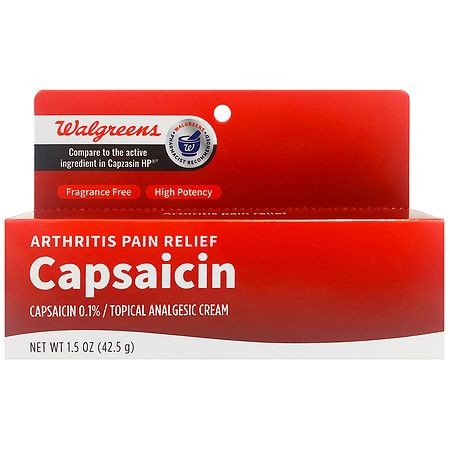
Contents
capsicum
Capsicum is a genus of plants that includes chili peppers and bell peppers, native to the Americas. Several varieties of chili peppers are grown worldwide in various shapes and sizes. Bell peppers are mild, some even sweet and can be eaten directly or as a vegetable. Chili peppers have varying degrees of pungency and are used as a spice in foods and for therapeutic purposes, primarily for topical pain relief and anti-inflammatory effects.
The medicinal property of capsicum comes from capsaicin, the active compound in chili peppers that causes a burning sensation when it comes into contact with tissue. Capsaicin can be taken orally in food, lozenges, and other products, applied to the skin as topical creams and lotions, or used as a nasal spray. Pepper sprays used as disabling weapons contain chili peppers.
Capsaicin initially irritates nerve cells, but continued exposure desensitizes them, providing relief from pain or itching. Topical capsaicin works on the nerve endings under the skin, while systemic capsaicin works on the nerve terminals in the spinal cord that carry pain signals to the brain.
Capsaicin desensitizes transient receptor potential vanilloid-1 (TRPV1), also known as capsaicin receptors. TRPV1 are ion channels on nerve cell membranes, and desensitizing them prevents the transmission of pain. Capsaicin also locally depletes substance P, a natural chemical involved in neurotransmission of pain.
Suggested uses of capsaicin include:
– Post-herpetic neuralgia, residual nerve pain from shingles
– Nerve pain from nerve diseases
– Joint pain due to osteoarthritis
– Minor muscle pains
– Itching (pruritus)
– Post-mastectomy pain syndrome
– Burning mouth syndrome
– Postoperative sore throat
– Overactive bladder
– Peripheral circulatory problems
– Clotting disorders
– Diarrhea
– Digestion problems
– Heart disease prevention
– Fibromyalgia
– Prurigo nodularis, an inflammatory skin condition with an itchy rash
– Improving cough reflex sensitivity in patients with a history of dysphagia and other swallowing-related disorders
– Chemotherapy and radiotherapy-induced mucous membrane inflammation (mucositis)
– Migraine (intranasal)
Capsaicin may be effective for local pain and itching relief, but there is inadequate scientific evidence to support the other uses.
Warnings
– Do not use if you have hypersensitivity to chili peppers.
– Do not apply on damaged skin or open wounds.
– Do not take orally if you have gastrointestinal infection or inflammation.
– Capsaicin may increase the risk of bleeding, so do not use it if you have a bleeding disorder and stop using it at least 2 weeks before surgery.
– Eating a large amount of chili peppers can cause a spike in blood pressure.
– Avoid taking concurrently with sedative medications.
Side effects of capsicum
Common side effects of capsicum include:
– Local burning sensation
– Contact dermatitis
– Bleeding
– Hives with topical use
– Flushing
– Sweating
– Cough
– Nasal discharge
– Mucous membrane irritation
– Eye irritation
– Eye tearing
– Gastrointestinal irritation
– Gastroenteritis
– Liver damage
– Kidney damage
This is not a complete list of all side effects or adverse reactions that may occur from the use of this drug. Call your doctor for medical advice about serious side effects or adverse reactions. You may also report side effects or health problems to the FDA at 1-800-FDA-1088.
Dosages of capsicum
There isn’t an established standard dose of capsicum.
Topical:
– Apply 0.025%-0.075% three to four times daily for a minimum of 4 weeks.
– It may take up to 14 days for the full analgesic effect.
– Avoid using near eyes or on sensitive skin.
– Wash hands after applying.
Oral:
– Fruit: 30-120 g orally three times daily
– Tincture: 0.6-2 ml/dose orally
– Oleoresin: 0.6-2 mg/dose orally
Intranasal:
– Migraine (Ausanil): spray 1-2 times into nostril
Prurigo Nodularis:
– Apply 0.025%-0.3% topically 4-6 times/day
Overdose
Eating too much capsicum can result in nausea, vomiting, abdominal pain, diarrhea, and a burning sensation in the gastrointestinal tract. Exposure to mucous membranes can cause severe irritation, pain, and burning. If capsaicin gets in the eye, it can cause prolonged burning pain with tearing, light sensitivity, and blurry vision. It can also cause dry coughing spells, wheezing, and shortness of breath.
Drug interactions with capsicum
Inform your doctor of all medications you are currently taking to determine any possible drug interactions. Never begin taking, suddenly discontinue, or change the dosage of any medication without your doctor’s recommendation.
Capsicum has no known severe, serious, or moderate interactions with other drugs. Mild interactions of capsicum include benazepril, captopril, enalapril, fosinopril, imidapril, lisinopril, moexipril, perindopril, quinapril, ramipril, and trandolapril.
For more information on drug interactions, visit the RxList Drug Interaction Checker. Always inform your doctor, pharmacist, or healthcare provider of all prescription and over-the-counter medications you use, along with their dosages.
Check with your doctor or healthcare provider if you have any questions about the medication.
Pregnancy and breastfeeding
– There are no controlled studies on capsaicin use during pregnancy, but small amounts absorbed from skin application are unlikely to cause adverse effects in the fetus.
– Capsicum eaten as food is likely safe during pregnancy. Check with your healthcare provider before taking capsaicin as an herbal supplement during pregnancy.
– Capsaicin topical application is likely safe while breastfeeding. Exercise caution about eating foods heavily spiced with capsicum.
Other considerations
– Wash hands thoroughly after applying capsaicin topically.
– Do not apply external heat after topical application.
– Keep out of reach of children.
– In case of accidental contact with eyes, nose, or sensitive areas, rinse with plenty of water and seek medical help if required or contact Poison Control.
Summary
The medicinal property of capsicum comes from capsaicin, the active compound in chili peppers. Capsaicin can be taken orally in food, lozenges, and other products, applied to the skin as topical creams and lotions, or used as a nasal spray. Capsicum may be used to treat post-herpetic neuralgia, nerve pain from nerve diseases, joint pain due to osteoarthritis, minor muscle pains, itching (pruritus), post-mastectomy pain syndrome, and others. Common side effects of capsicum include local burning sensation, contact dermatitis, bleeding, hives with topical use, flushing, sweating, cough, nasal discharge, mucous membrane irritation, eye irritation, and others.


